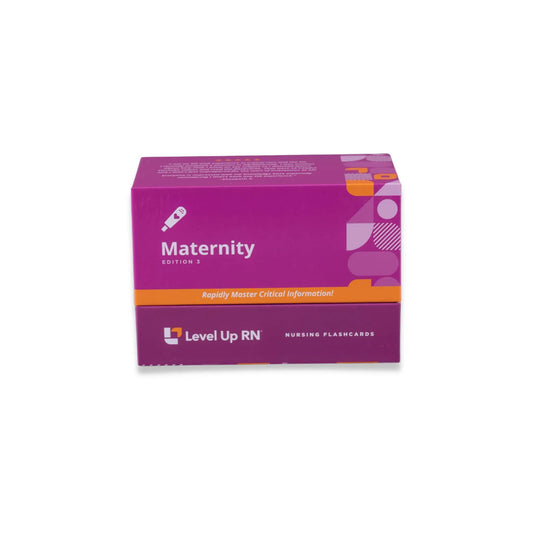Maternity Nursing - Flashcards
This article covers the physiologic changes that happen in a pregnant patient before labor, as well as the differences between true labor and false labor.
The Maternity Nursing series follows along with our Maternity Nursing Flashcards, which are intended to help RN and PN nursing students study for nursing school exams, including the ATI, HESI, and NCLEX.
Expected physiologic changes before labor
The physiologic changes that occur before labor are the changes that occur in the weeks leading up to labor. They are not a sign that labor is imminent.
The following physiologic changes may occur before labor (note that these are organized in alphabetical order, not in the order they may occur as labor approaches):
- Backache: though this does occur immediately before labor, backache may also be caused well before labor as the muscles and ligaments relax in that area in the pelvis in preparation for labor.
- Bloody show: this is a brown or bloody or blood-tinged vaginal discharge. Sometimes it is called a mucus plug. Essentially, things that were previously held by the cervix are passing through the vagina. Again, this does not mean labor is imminent, but it does mean that the delivery is getting closer.
- Burst of energy: also called “nesting,” this is an overwhelming need to organize the home in preparation for the new baby. A pregnant person might feel compelled to clean everything in the house (surfaces, clothes, dishes, etc.), or rearrange the contents of all the drawers and closets.
- Contractions: even if labor is still a ways off, contractions may become stronger and occur more frequently.
- GI upset: it is common for a pregnant person to experience nausea and vomiting or heartburn, which, of course, may occur throughout a person's pregnancy.
- Lightening: This is when the baby drops lower into the pelvis. A provider might say that the baby has “dropped,” which could mean that labor is going to start soon.
- Rupture of membranes: This is another indication that a pregnant person is about to give birth, though, again, possibly not imminently. They may say their water has broken,” but that does not mean they are about to give birth or have to rush to the hospital.
- Weight loss: It is possible that a pregnant person loses from 1 to 3 pounds as labor approaches. This is the body shedding water weight and often occurs in the days before giving birth.
What are Braxton Hicks contractions?
Braxton Hicks contractions are mild, irregular contractions during pregnancy. They feel like tightness in the abdomen. Think of Braxton Hicks contractions as practice for giving birth, helping the muscles of the uterus to get ready for labor and the birthing process.
True versus false labor
There are several key differences between true and false labor.
True labor is when the baby is really on its way. False labor is the body’s way of practicing for giving birth. As the baby gets bigger and puts pressure on things, a pregnant person may experience irritations and symptoms of labor, but that may still be days or weeks away. Below are some of the differences between true and false labor.
Contractions
True labor involves regular contractions, which become stronger and closer together over time. These contractions affect the length and the dilation of the cervix. Contractions in false labor are weak and irregular.
In true labor, walking increases contraction intensity. In false labor, walking or a change of position decreases the intensity of contractions.
Comfort measures and contractions
A real contraction is due to a positive feedback loop: the pregnant person is feeling the release of oxytocin, a hormone that stimulates the uterine muscles and causes contractions that begin the process of labor. The contractions cause oxytocin to be released, which causes stronger contractions, etc. No matter what the pregnant person does by way of comfort measure — drinking water, laying down, rolling on their left side — it won’t stop the positive feedback loop.
With a Braxton Hicks (practice) contraction, if the pregnant person takes comfort measures (drinks water, lays down, puts their feet up and relaxes), these may help to make the contractions go away, indicating it’s probably not time yet for true labor.
Remember that no matter the contractions, whether the person is experiencing real or false labor, it does not mean that it’s not painful.
Cervical changes
Cervical changes only happen with actual contractions (not with Braxton Hicks contractions). The pregnant person’s cervix undergoes dilation and effacement in true labor.
Presenting
In true labor, the presenting part of the fetus — the part that is presenting at the cervix — is going to be engaged in the pelvis. This does not occur in false labor.



1 comment
Answer: False labor. Braxton Hicks.